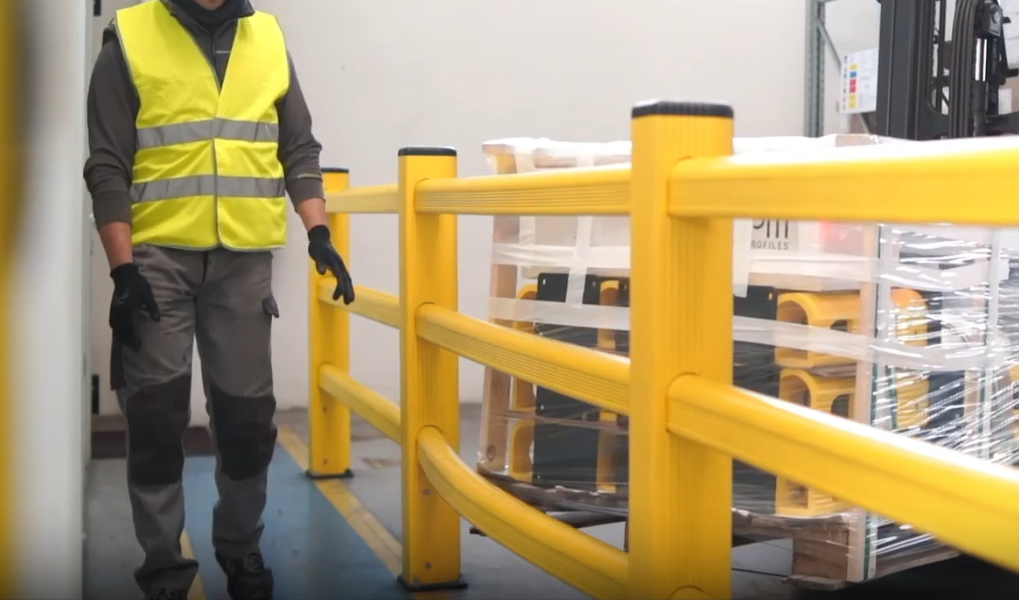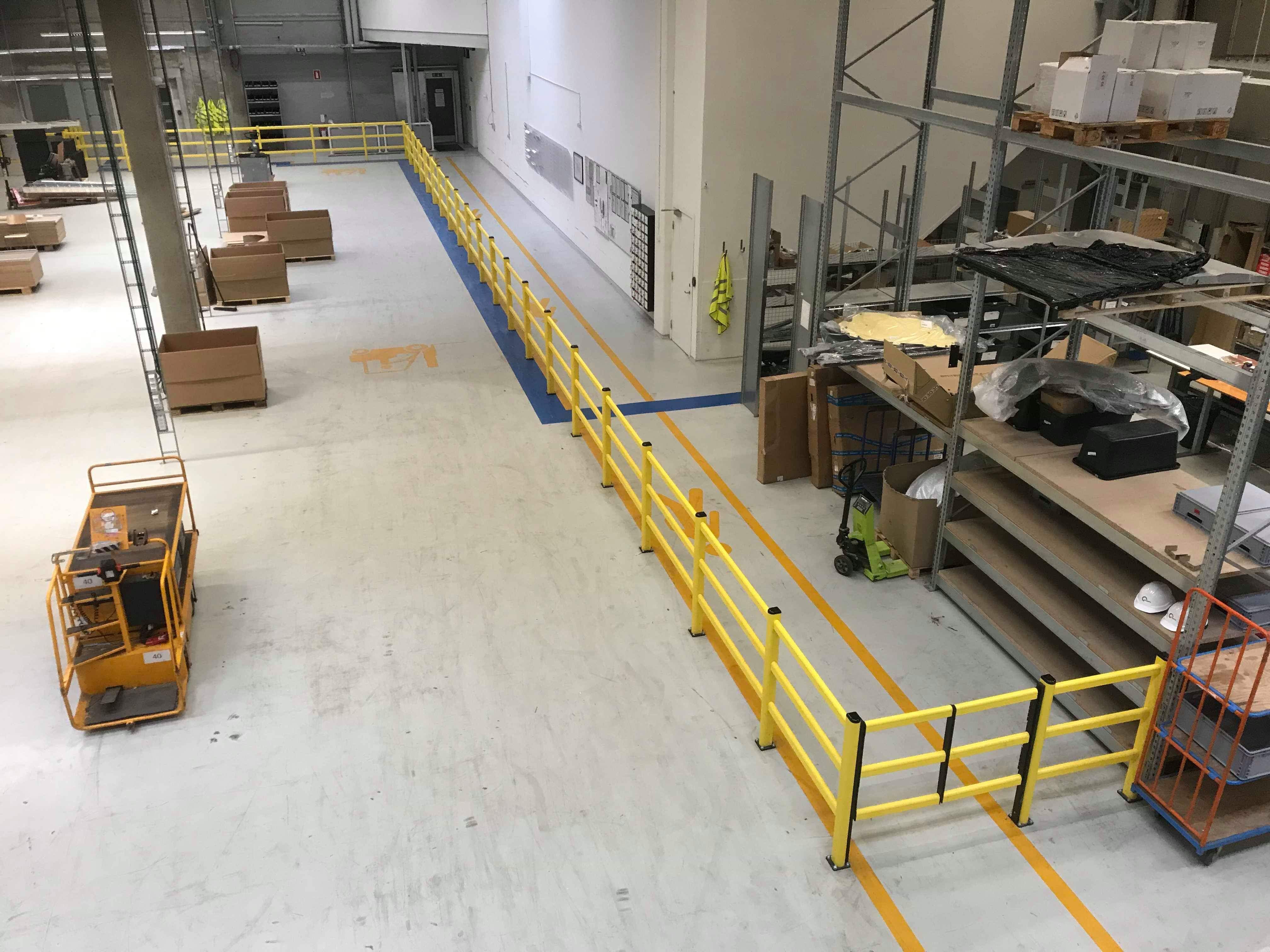Why Some Polymer Barriers Fail Under Forklift Impact
 By
Alana Graham
·
4 minute read
By
Alana Graham
·
4 minute read
You've seen the promises. Polymer barriers that "flex and return." Marketing materials showing forklifts bouncing harmlessly off bright yellow barriers. But here's what they don't show: the failures.
We know how frustrating it is when you invest in quality safety barriers, only to find them cracked, collapsed, or permanently deformed after the first real impact. You trusted the solution to protect your people and equipment, not create another safety risk.
In this article, you'll learn why some polymer barriers fail under forklift impact, how to identify quality differences before you buy, and what specifications actually matter for real-world protection in UK workplaces.
-
How Can You Tell Quality Barriers From Cheap Alternatives?
-
How Do You Choose Barriers That Won't Let You Down?
What Actually Happens When Low-Quality Barriers Get Hit?
Across UK warehouses and manufacturing facilities, the same story repeats: barriers that looked robust in the catalogue crack, collapse, or deform when hit by forklifts. The problem isn't the concept of polymer protection - it's the quality gap between good and poor barrier design.
The Performance Problem
Many plastic safety barriers may look similar, but their material standards and impact resistance can vary significantly. Some lower-grade barriers lack the necessary strength to absorb impact, causing them to crack or collapse under real-world conditions.
When Protection Fails
Choosing the wrong barrier can lead to failures under pressure, resulting in costly damage and safety risks - exactly what the barriers were meant to prevent. When protection systems fail at the moment you need them most, you're left with damaged equipment, potential injury risks, and expensive repairs.
What Makes the Difference
The gap between barriers that work and those that don't often comes down to factors that aren't obvious from product catalogues: material formulation, internal structure design, and manufacturing standards. These differences only become apparent when real forklift impacts put the barriers to the test.
Why This Matters
If you're here, you've likely faced one of these frustrations: a serious incident has occurred in your facility, you're constantly repairing damaged assets due to forklift impacts, or you've tried other barriers but haven't found a reliable solution that actually works when tested by real-world conditions.

Why Do Some Polymer Barriers Crack While Others Flex?
The answer lies in polymer chemistry and manufacturing quality. Basically, not all "polymer barriers" use the same materials or production methods.
High-Performance vs Basic Polymers
Quality barriers use engineered polymer compounds specifically formulated for impact resistance. These include impact modifiers, UV stabilisers, and flexibility enhancers that maintain performance over time.
Basic barriers often use standard PVC or recycled materials without these additives. While they look similar initially, they become brittle and crack under stress - especially in cold UK warehouse conditions.
Internal Structure Design
Advanced polymer barriers incorporate shock-absorbing internal structures. Clarity's rack protections feature three shock absorbers made of the same polymer material that effectively absorb frontal and lateral impacts from moving vehicles.
Cheap alternatives use hollow or foam-filled designs that collapse under pressure, providing minimal energy absorption.
Design Features That Matter
PAS 13 gives recommendations for impact resilience, dimensions and positions of safety barriers in the workplace. Key factors include:
- Barrier height that prevents forklift forks from riding over protection
- Vertical barrier faces that absorb rather than deflect impacts
- Modular construction allowing individual section replacement
- Professional mounting systems with substantial base plates and correctly sized anchors
How Can You Tell Quality Barriers From Cheap Alternatives?
Material Specifications
Reputable manufacturers provide detailed polymer specifications, including impact ratings, temperature ranges, and UV resistance data. If they can't or won't share this information, look elsewhere.
Third-Party Testing
Quality barriers undergo independent impact testing to verify performance claims. Test reports should specify impact energy levels, deformation measurements, and recovery performance to prove the barriers will actually work under real-world conditions.
PAS 13 Compliance
PAS 13 compliance ensures that safety barriers are effective in protecting people and assets from potential hazards and includes specific testing criteria. PAS 13 requires barriers to retain their stated performance over time - not just during initial testing.
Proper compliance includes:
- Documented impact ratings and test reports
- Installation guidelines and anchor specifications
- Performance verification over the barrier's service life
Long-Term Warranties
Manufacturers confident in their products offer substantial warranties covering material performance and structural integrity. Short or limited warranties often indicate quality concerns.
Read more about reliable warranties: Why Our Warranty Actually Protects You (Not Just Your Barriers)
High-quality polymer barrier undergoing controlled impact testing
How Do You Choose Barriers That Won't Let You Down?
Start with Proper Risk Assessment
Identify impact velocities, vehicle weights, and collision frequencies for your specific site. This determines the protection level required and helps eliminate under-specified systems.
Prioritise Proven Performance
Choose barriers with documented real-world performance rather than just laboratory test results. A logistics company found the new barrier system that we supplied and installed so transformative that their facilities contact said:
"It revolutionised the way we operate our lines."
Consider Total Cost of Ownership
Quality polymer barriers may cost more initially but eliminate maintenance, replacement, and floor repair expenses. One production facility dealing with ongoing corrosion problems switched to polymer barriers and reported:
"We used to plan annual repainting into our maintenance budget. With polymer, we've completely removed that cost."
Partner with Experienced Suppliers
Work with suppliers who understand health and safety legislation and can provide site-specific design advice. Generic suppliers often lack the technical knowledge for optimal barrier selection and proper compliance with PAS 13 requirements.
A pharmaceutical manufacturer we worked with achieved £700,000 in transport savings after implementing a comprehensive barrier system that prevented costly disruptions.
What's at Stake
Barrier failures aren't just inconvenient - they're dangerous and expensive. When protection systems fail at the critical moment, you're dealing with equipment damage, production downtime, costly repairs, potential injuries, and in the worst case... fatalities.
The difference between success and failure lies in material engineering, proper testing, and proven performance - not marketing promises.

Don't Risk Another Barrier Failure
Don't risk your people's safety with inferior barriers that fail when you need them most. Quality polymer barriers provide reliable protection while reducing long-term maintenance costs.
Book a site assessment and discover how proper barrier selection can protect your people and your assets.



